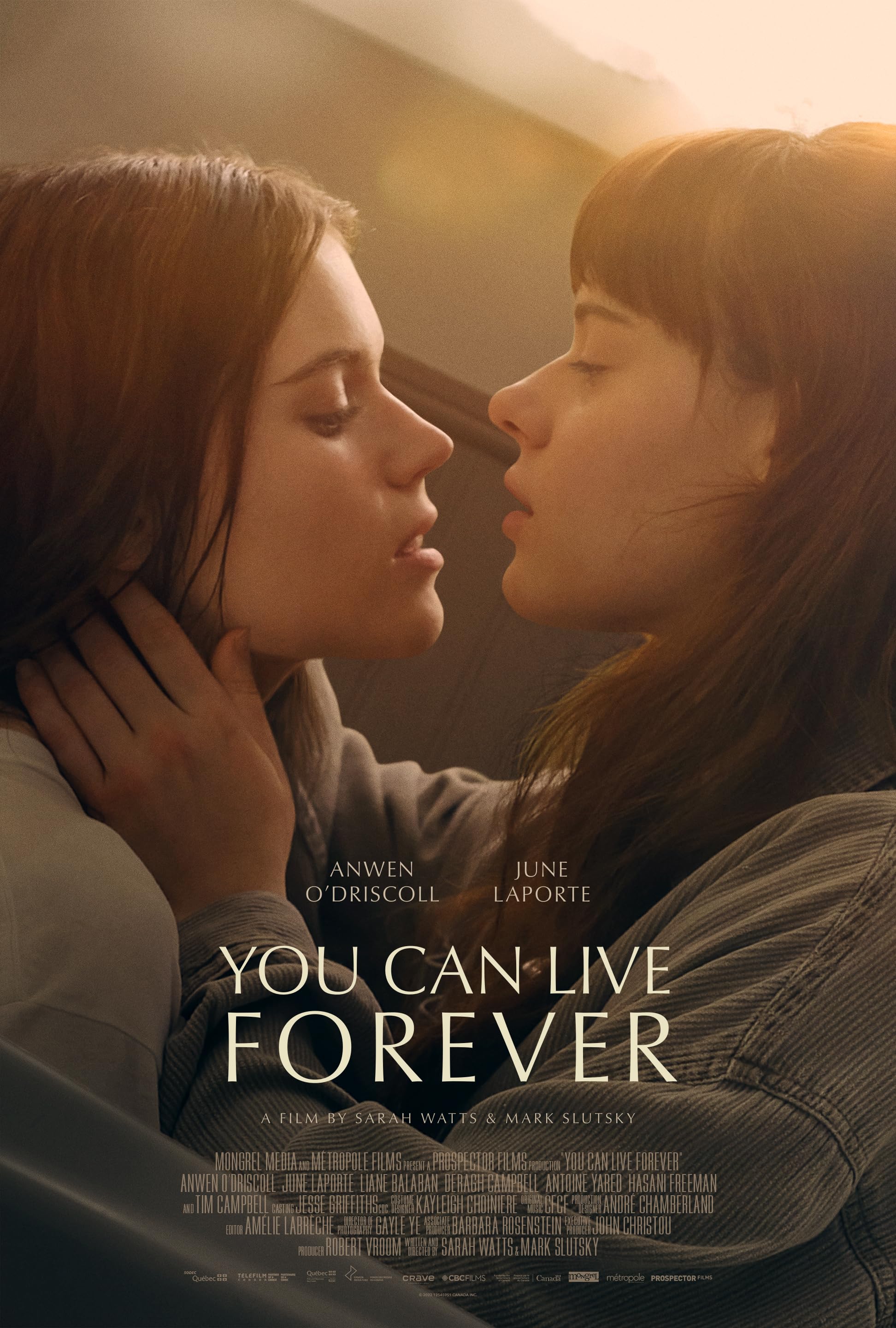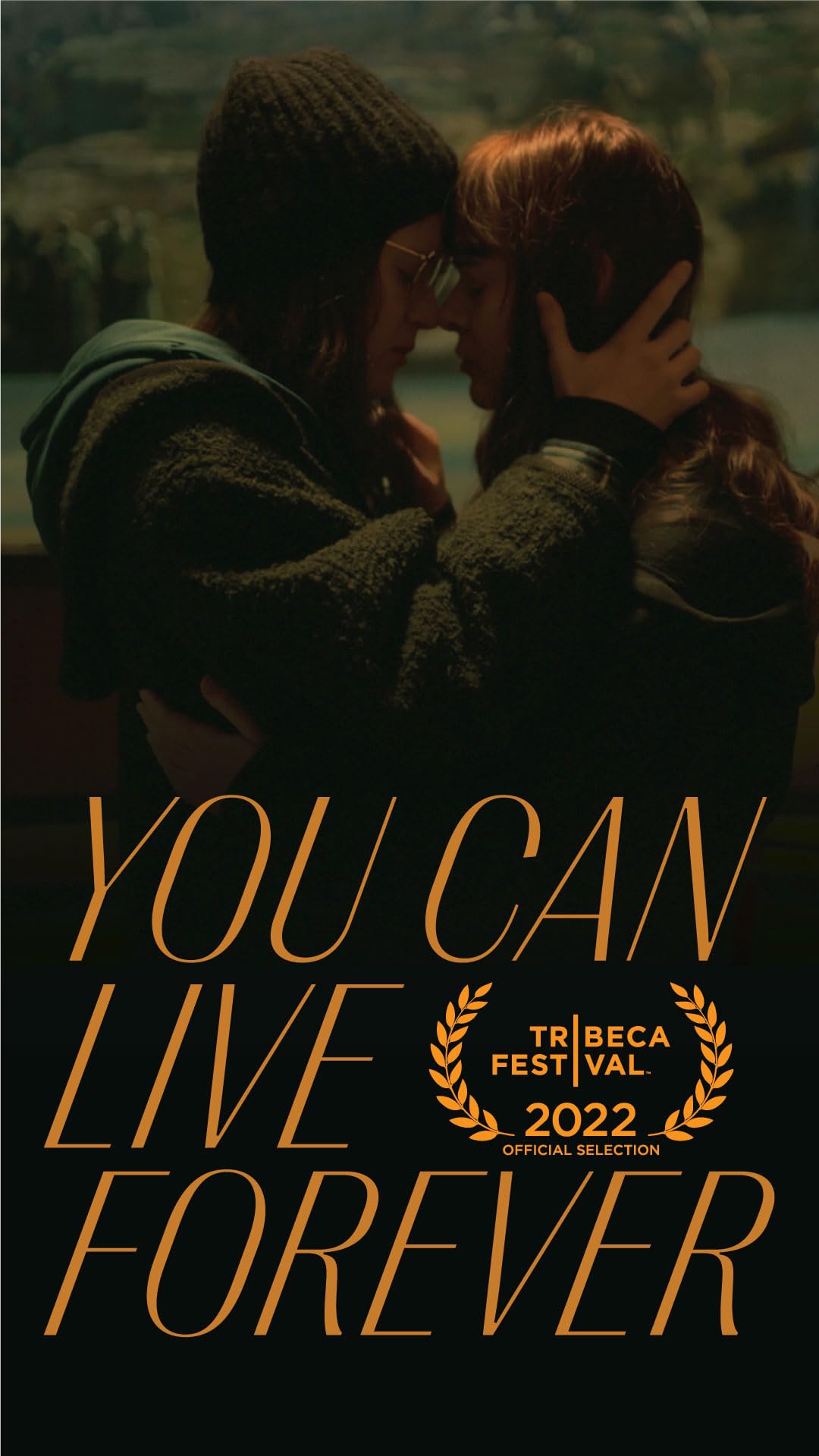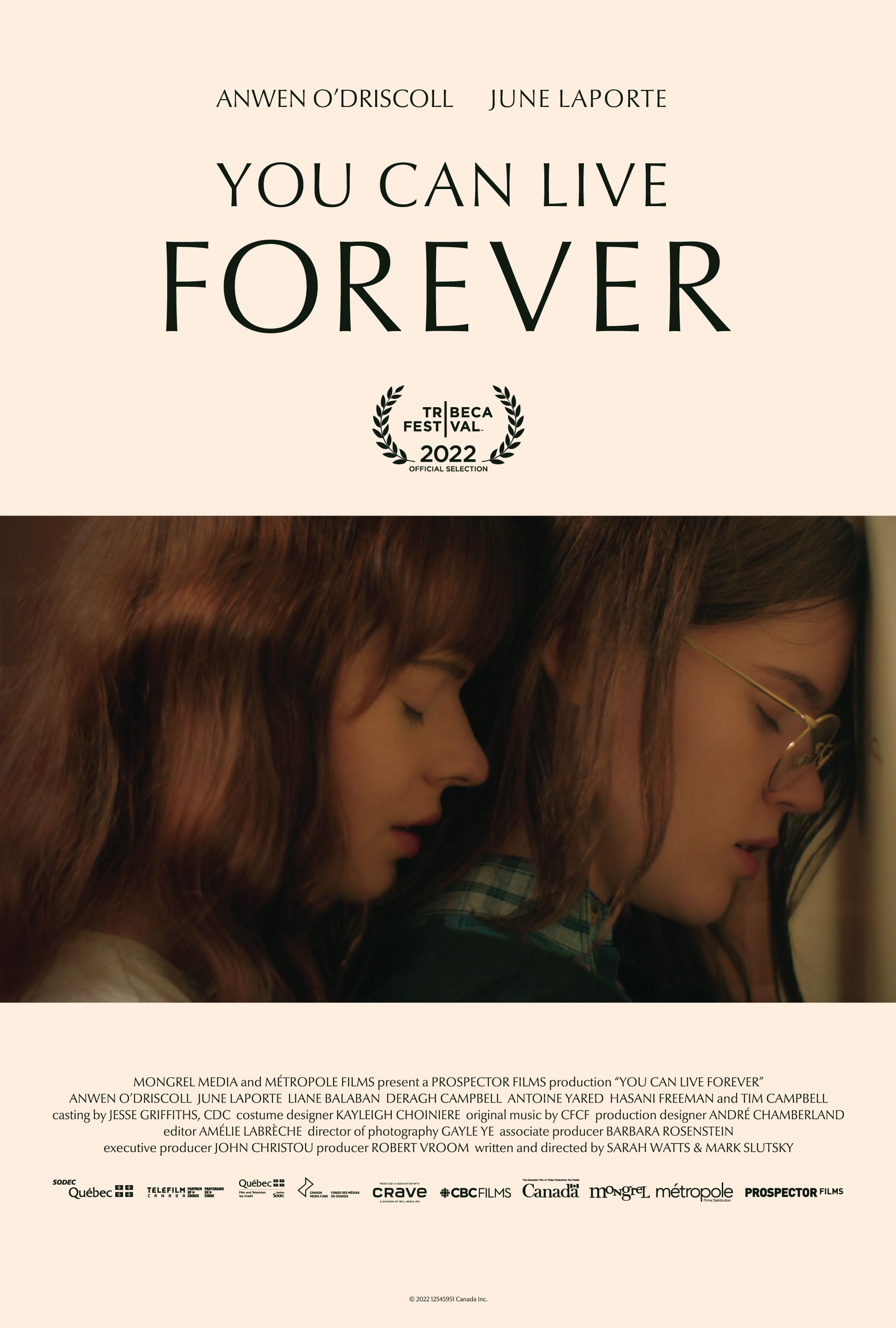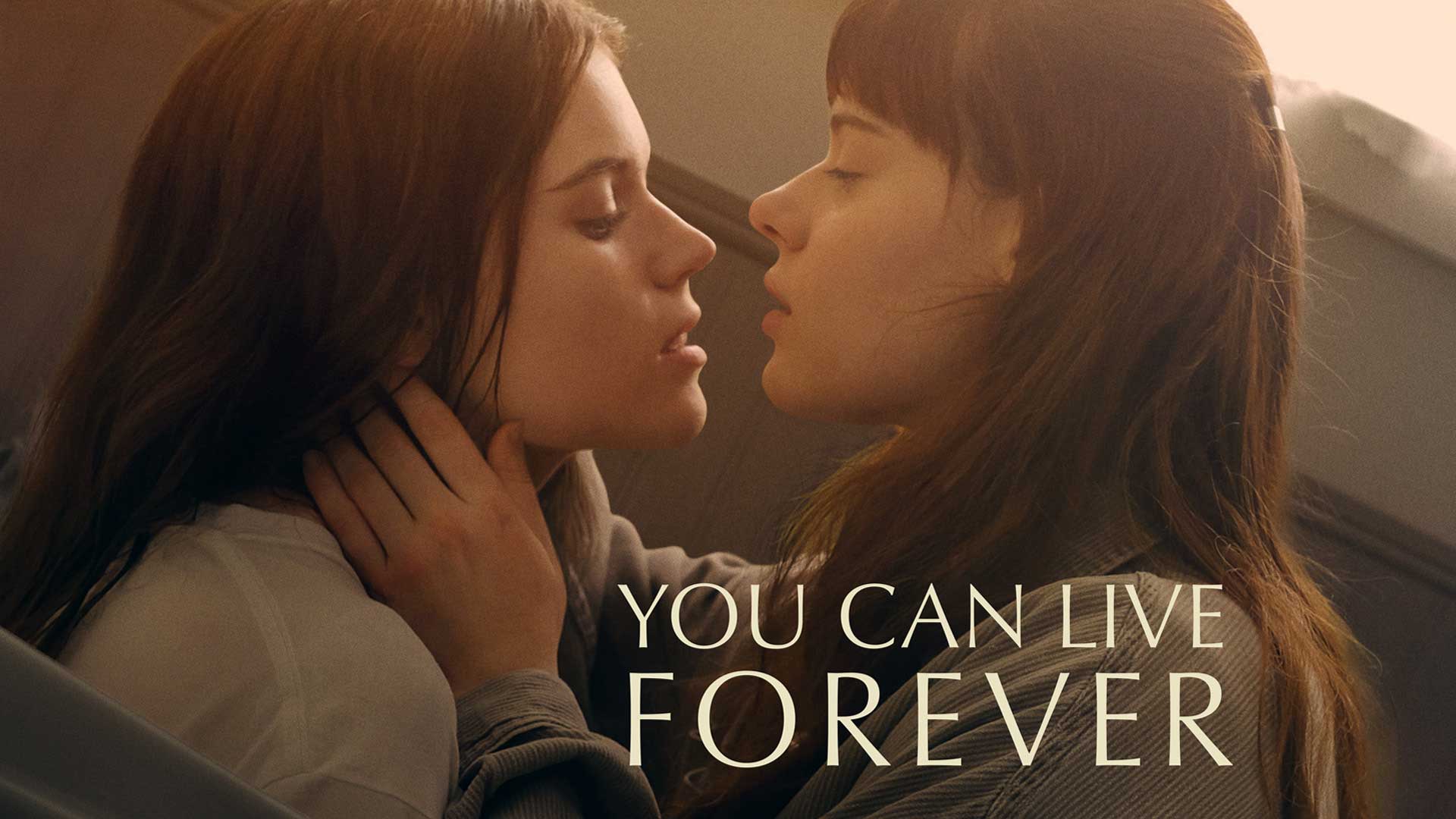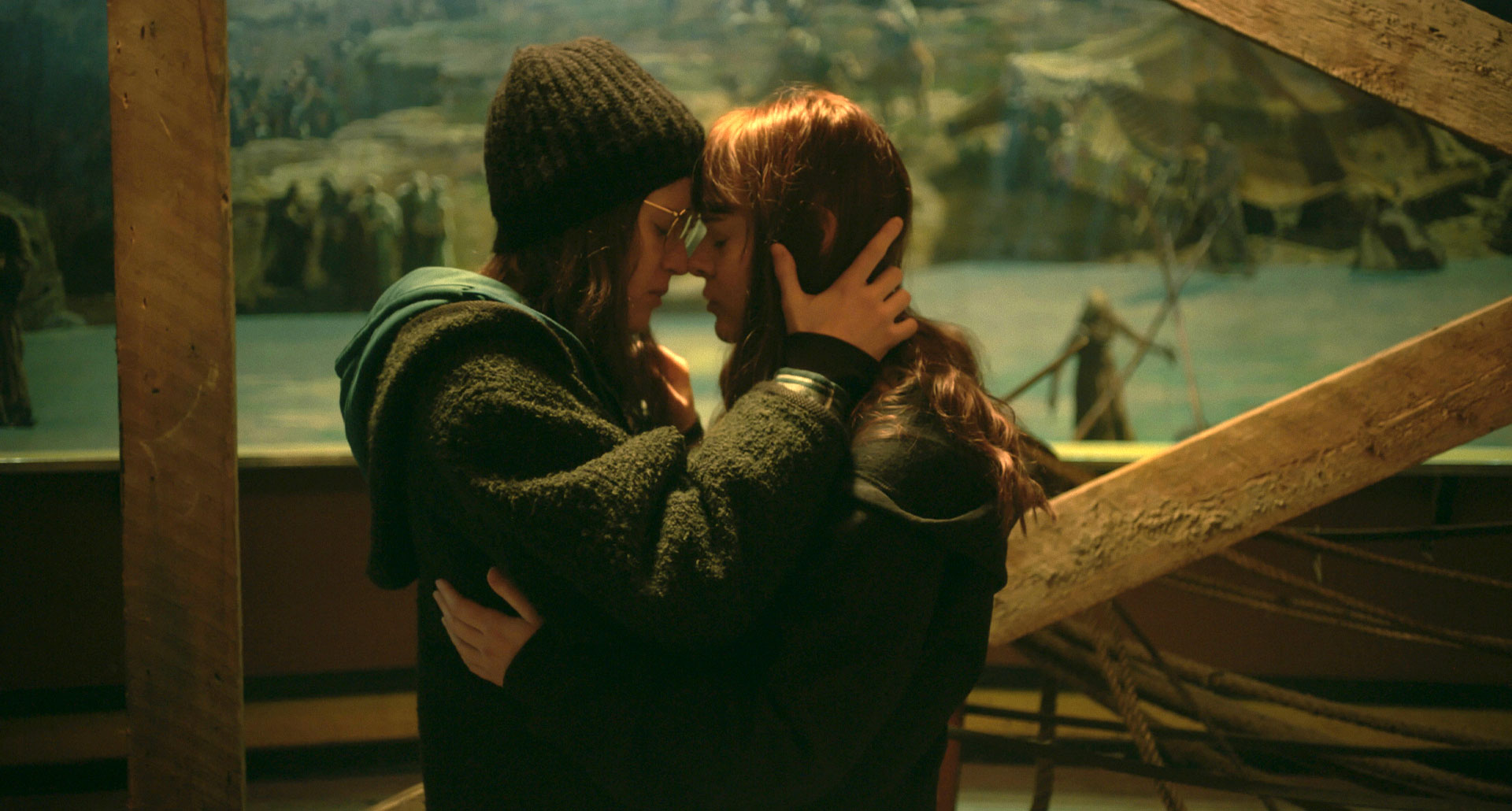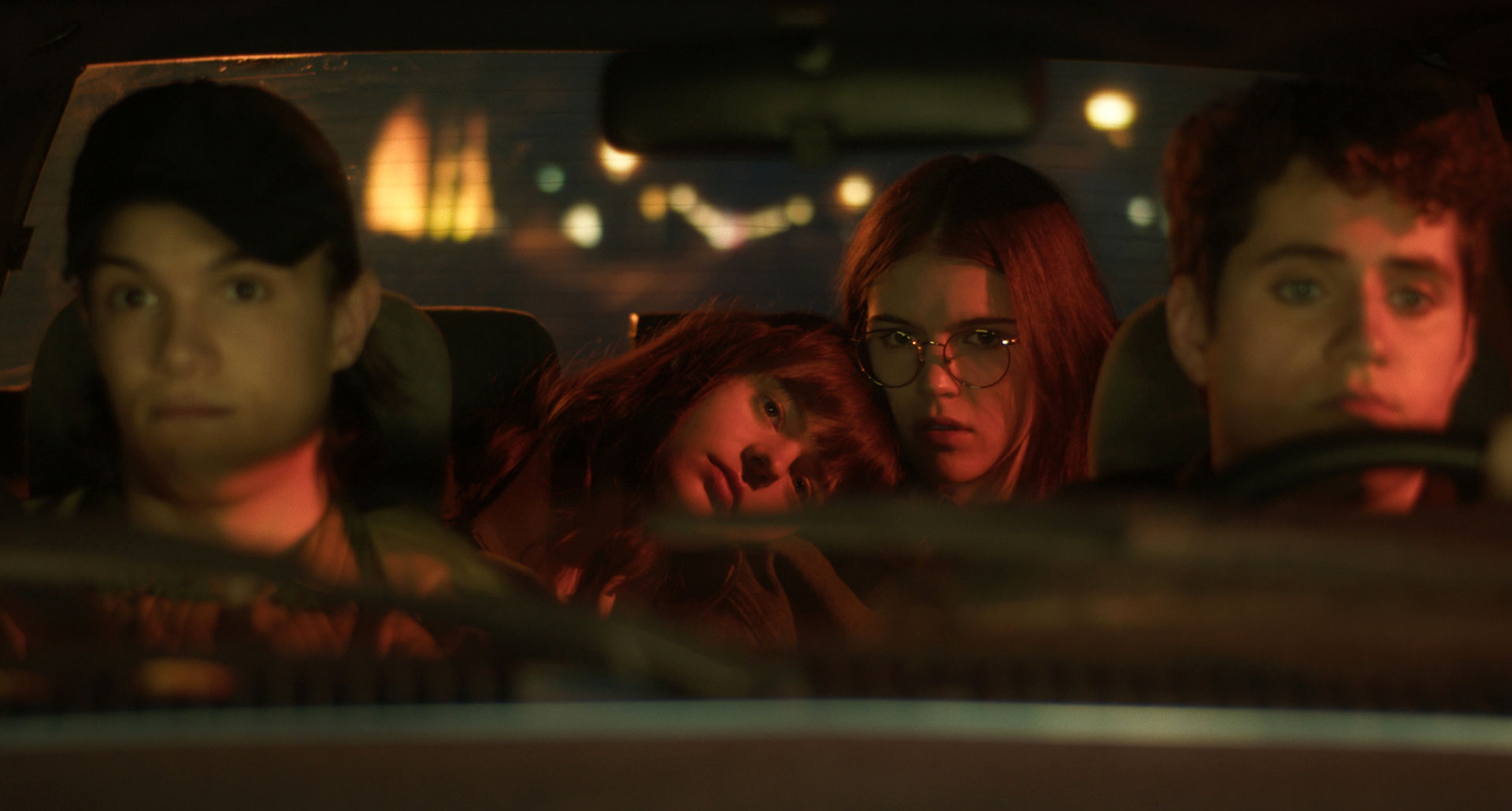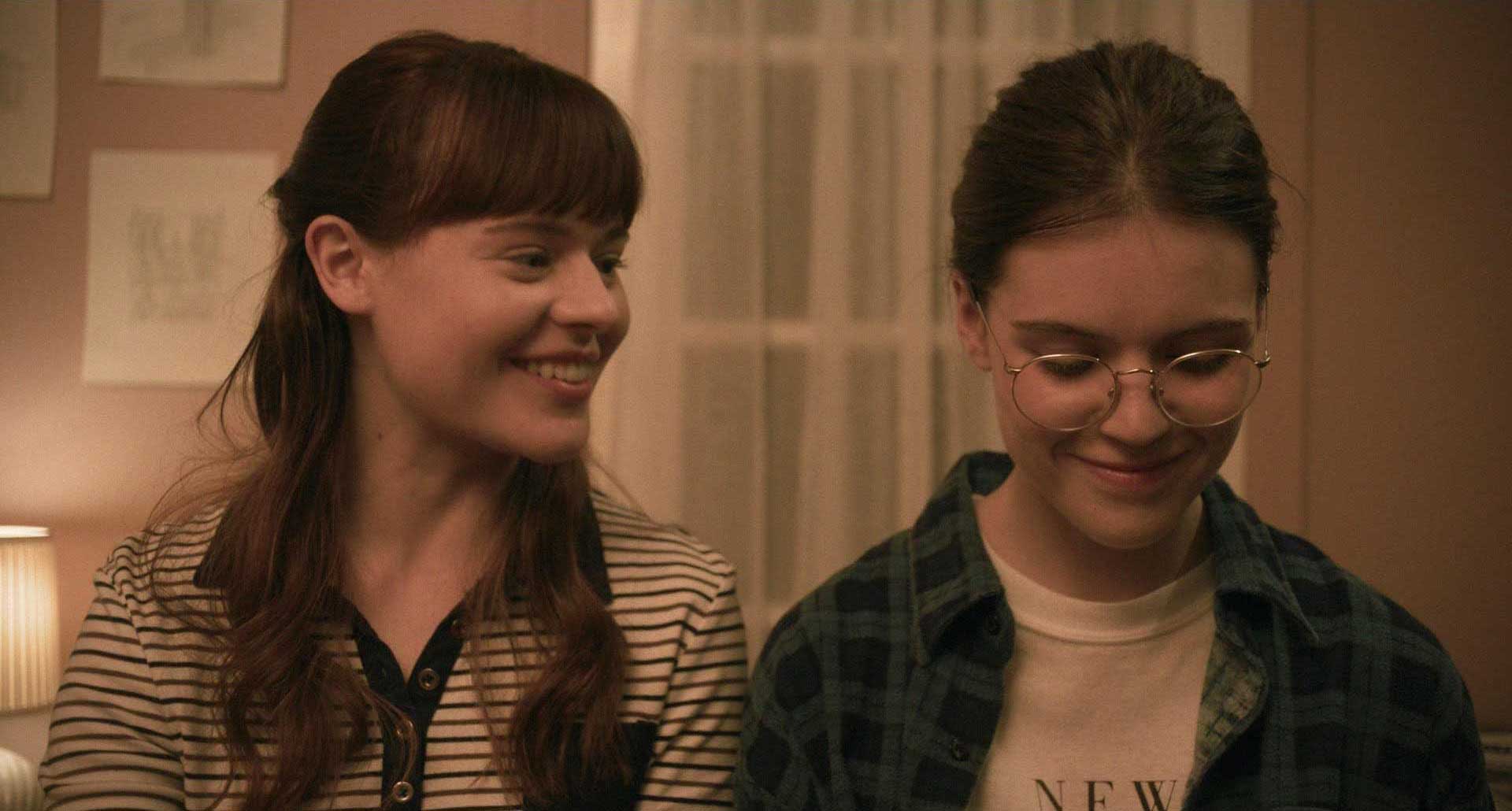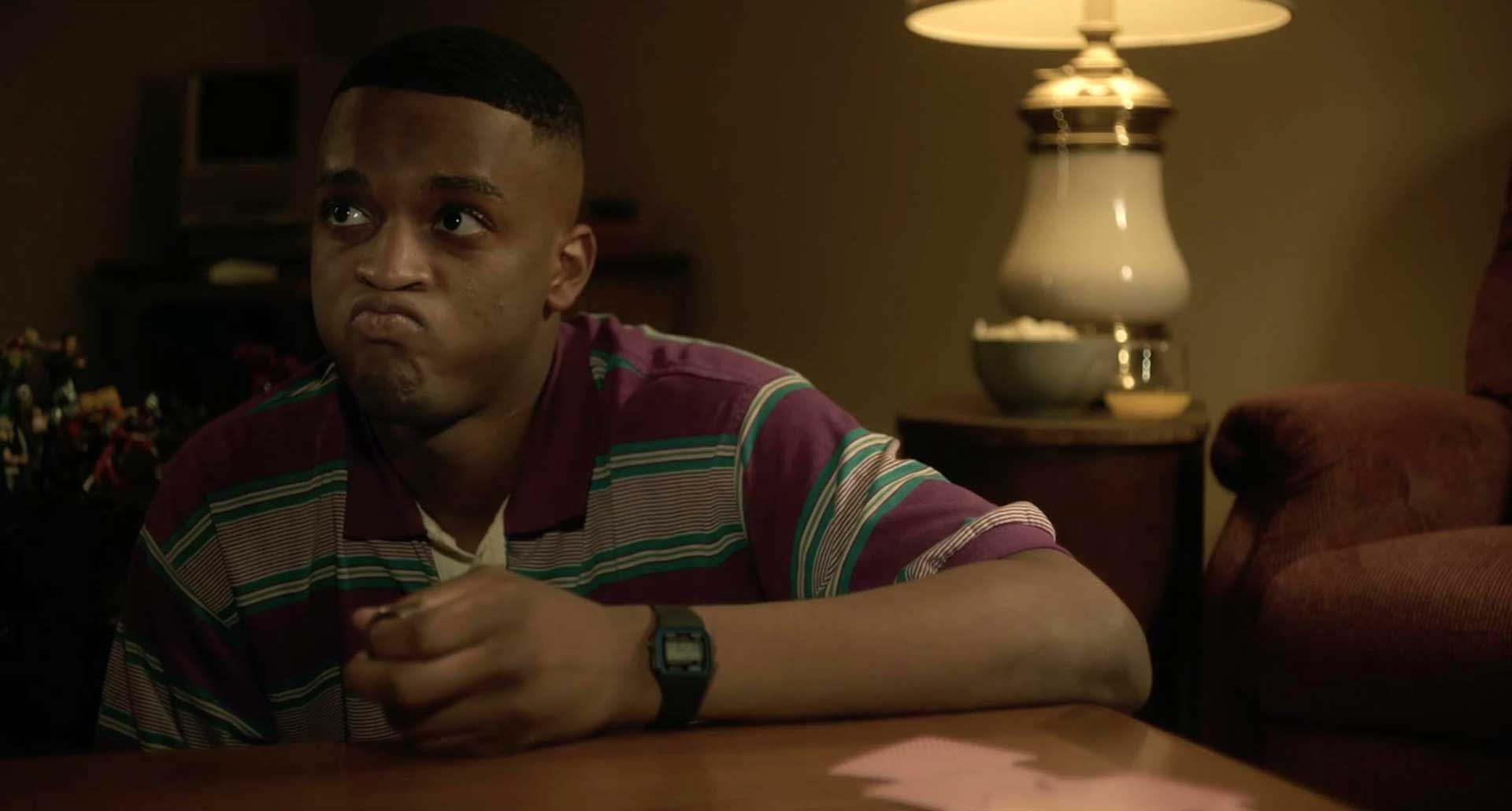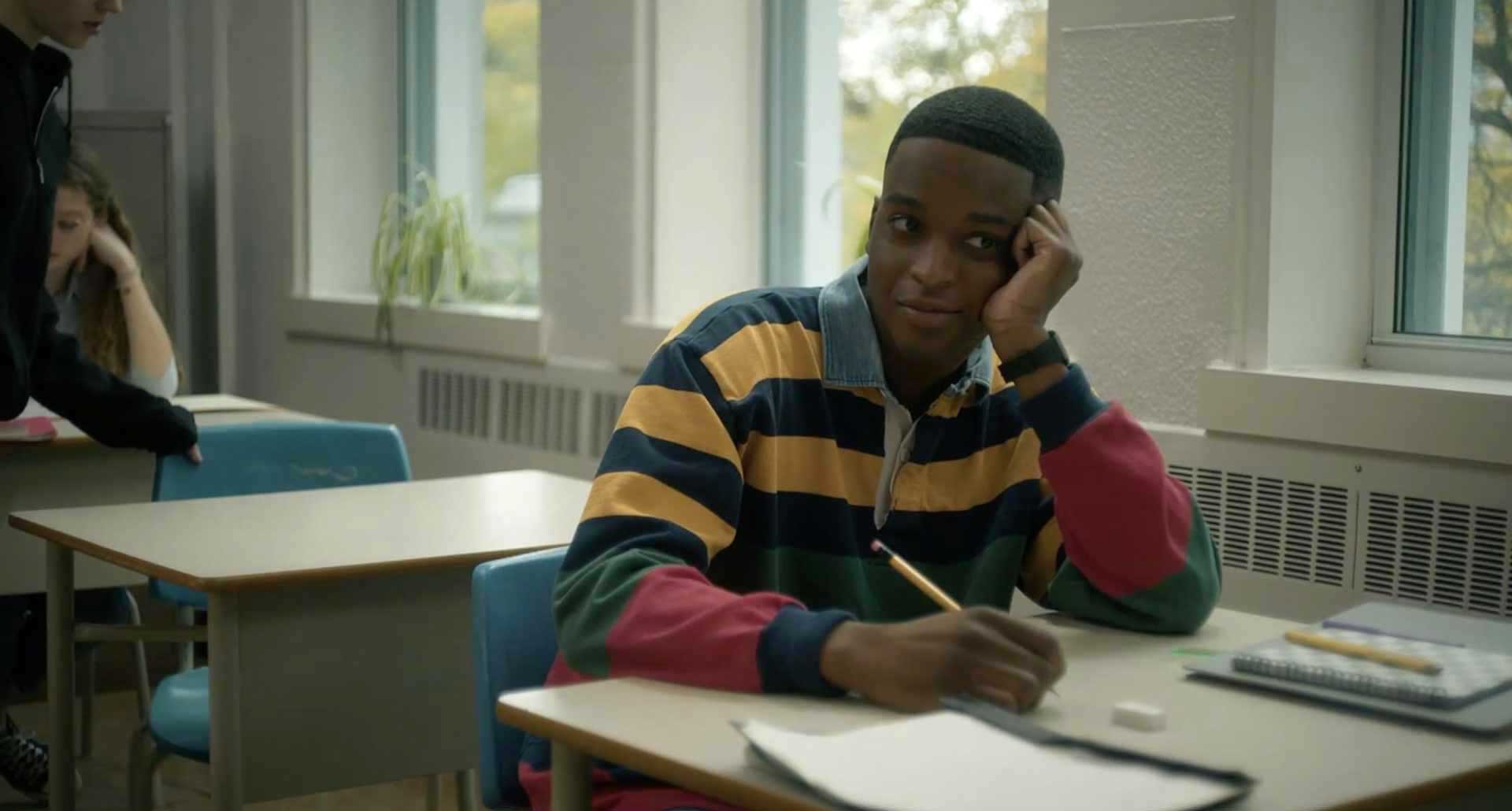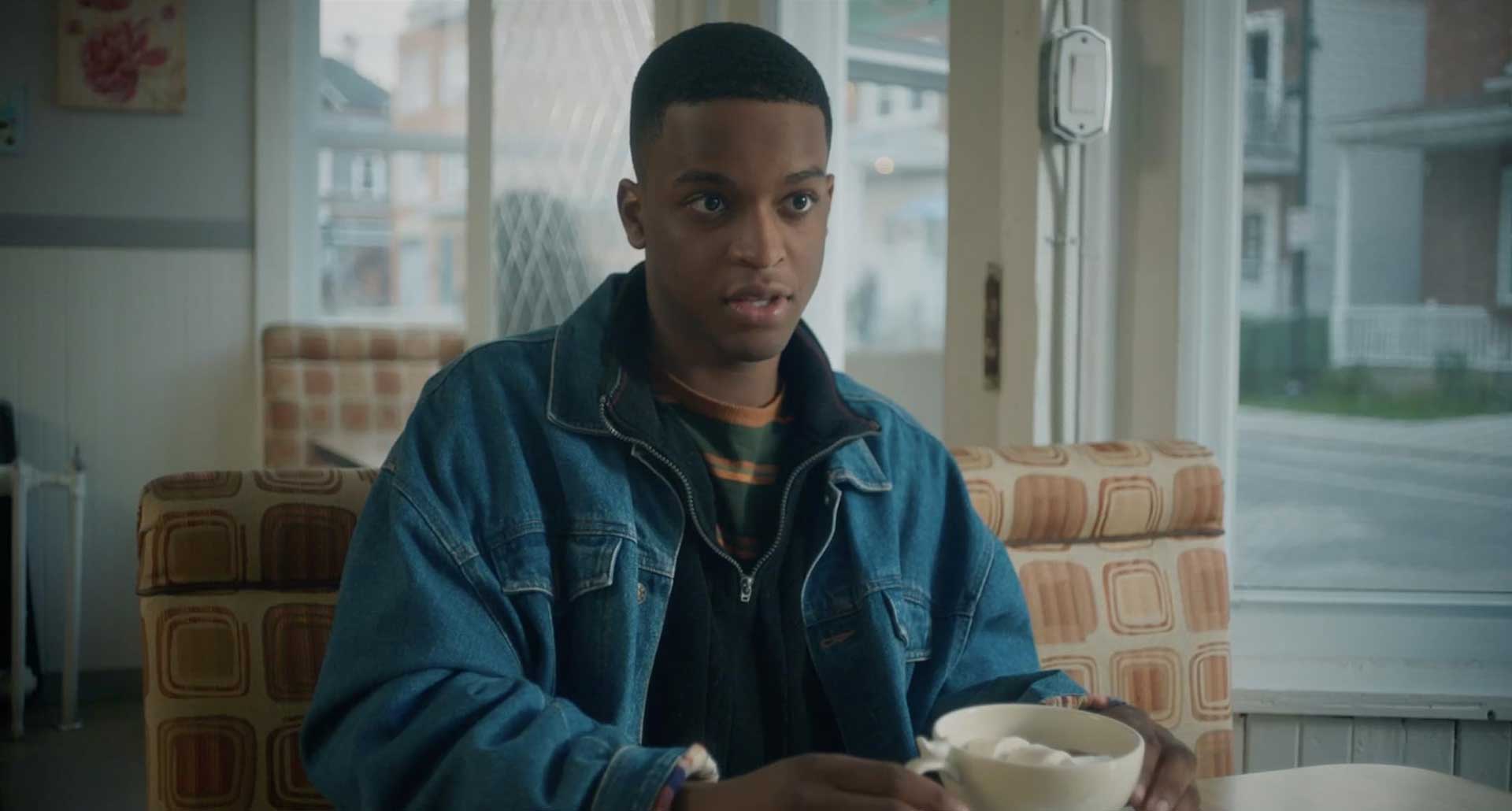
You Can Live Forever Waiting on the Prayer of a Streaming Deal
(But it’s better to do so from Canada, where they still actually fund independent film)
February 15, 2024
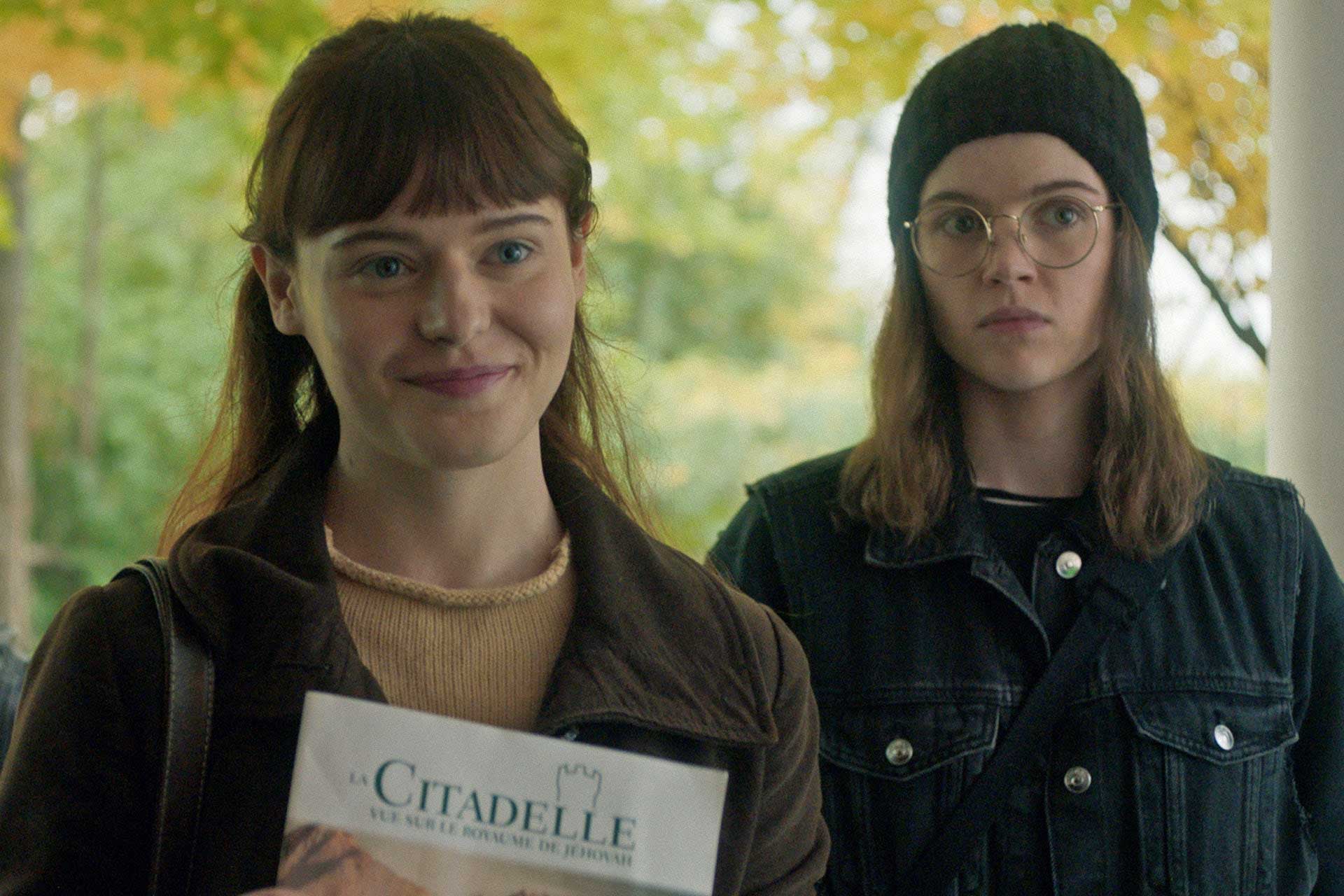
Rob Vroom is the producer of You Can Live Forever, who shares below his perspective on the film’s distribution.
We were living in Los Angeles but had gone back to Montreal to produce and shoot my first feature, Three Night Stand (2013). Then my wife and I ended up having a baby right before production started and that just sort of threw all our plans of returning to LA out the window. We set up shop here in Montreal and it has worked out brilliantly.
Having started my first production company to produce Three Night Stand, I decided to start developing indie features and focus my energy on collaborating with local writers and directors. A few years later, I produced my second feature, Another Kind of Wedding, alongside Pat Kiely, who also wrote and directed it. After that, I partnered with another Montreal producer, John Christou, to produce the acclaimed indigenous zombie film Blood Quantum by the late visionary Jeff Barnaby. Since that project, I have taken over the reins at Prospector Films and continue to develop and produce independent films.
You Can Live Forever was a project in development with writers Sarah Watts and Mark Slutsky that John Christou had been working on for a few years. When I read the script, I knew it was a story that needed to be told. It’s a heartbreaking, beautiful love story, first and foremost, but it’s also an important queer story—specifically lesbian. And there’s certainly not enough representation on that front. It also touches on the religious community aspect, something, I find, always make for stories that are compelling and important to share.
Distribution
I’m always thinking of distribution to the degree of, “Okay, how are we going to take this little indie film that’s going to have very little resources behind the distribution and have some kind of impact and reach as wide an audience as possible?”
I’m in a very fortunate and privileged position that I’ve produced four Indies in the last 10 years, and they’ve all been made in almost identical structures with the same funders and backers: we secure a pre-license TV deal that then triggers a top-up fund and the provincial and [Canadian] federal tax credits. I went to Cannes this year to try and expand my network because I need to find a way to not just rely on the public money here in Canada, but to find other types of financial backers. It’s difficult to find those relationships and doing it that way takes a long while, and so I’m grateful for the success we’ve had with our relationships here at home.
One thing that to note here is that these were first-time feature filmmakers—not myself, but the writers/directors were. So, it’s a bit of a risk for any distributor to come on early. Because of that, I didn’t get an MG from them, but that was okay. I didn’t need an MG for financing purposes for the film. I’d already secured all my financing. That wasn’t a motivating factor for Mongrel Media, who we went with as our Canadian distributor, but I liked them and respected them as a distributor in Canada and I thought they were a good partner to move forward with. They obviously had trusted me to be able to deliver this film with two first-time filmmakers.
Like all indies, it’s a grassroots approach. What can we do on social media? How can we contact anyone we know in the media and press and sort of get the word out?
I had secured the deal with Mongrel right before we went into production. In the Canadian system, most of the time funding requires distribution to be in place beforehand. The lower budgeted ones, however, don’t require it because often distributors don’t want to take that risk too early before the films have been made. But we had a CAD $2.5M budget. And prior to that, I’d actually secured a pre-licensed deal with CBC (Canadian Broadcasting Company) films. CBC had already bought the rights to a second window deal. They loved the script and so they came on board with a pre-license.
I proposed a CAD $2.5 million Canadian budget. I was able to raise that money through Telefilm Canada—through SODEC—which is our Quebec provincial equivalent to Telefilm, via a pre-license deal with CBC and a top-up fund through the CMF (Canadian Media Fund). If you can secure a pre-license fee of at least 5% of your budget, then CMF will top up another 15% of your budget, which for us was huge. And then of course tax credits. I would have had a much larger producer investment, but fortunately, our provincial government created a COVID fund to help offset COVID related costs. Here’s the financial structure:
| equity / grant / TV licence / tax credit | amount |
|---|---|
| SODEC | CAD $750,000 |
| Telefilm | CAD $550,000 |
| CBC Films | CAD $125,000 |
| CMF | CAD $373,500 |
| Provincial Tax Credits | CAD $402,000 |
| Federal Tax Credits | CAD $80,000 |
| COVID Support Fund | CAD $195,000 |
| Producer Investment | CAD $15,000 |
As a producer, I know that a weak spot or even a blind spot of mine can be distribution. At the end of the day, by the time the film’s out and I’m doing my best to try and help the distribution, I’m also working on next projects—I’m in development or I’m going into production on others. So, distribution is a hard thing to sort of pour myself into to begin with, and I felt like I was in good hands with Mongrel.
Additionally, I will admit that I knew very little about the queer distribution space. I questioned how to reach that audience and how this film might resonate with people while we were prepping and going into production. It was not top of mind in terms of that element, although Sarah Watts, the co-writer and co-director, kept telling me lesbians around the world are going to go crazy for this. And she was right. We’ve had an insane following. Unfortunately, the film got leaked right out of our world premiere at Tribeca and it went viral (more on this below).
Casting
You’re also often asked, “Who’s the cast?” but the Canadian system allows you to not have to focus on that so much and just cast who feels right for the part. We didn’t have the money to be offering it to any one with huge clout, but we knew we needed young adults that you believe can be 16-years-olds. It was a long casting process, but we were thrilled with who we ended up finding. We found some real gems. Anwen O’Driscoll and June Laporte brought their authentic selves to their performances, and they’ve received real accolades for their work.
Faith Based LGBTQ+ Filmmaking
I think we assumed on the faith-based side that no one from the Jehovah’s Witness community would ever watch this film. And we don’t know. They’re obviously a very private group and I’m sure that they are not fans of this story. But anecdotally, we’ve heard from a tremendous number of ex-JWS who’ve said the film so resonated with them. And a lot of queer ex-JWS who said that it was like we had written their story.
We didn’t want to make the Jehovah’s out to be the worst people in the world, because even with their restrictive views, they can still be a warm and welcoming community. And it was important that we found that balance in the film, and I believe the co-writers/directors did a wonderful job at that. It’s often been the part we’ve been praised for—we didn’t vilify the religious community. We told a respectful, and compelling story.
I personally didn’t realize how big an impact this film was going to have within those communities and other queer communities around the world. The responses from people, and women in particular, in places like Brazil and China and Russia—oppressive places with oppressive regimes that don’t look kindly on queer folk—has been deeply rewarding.
Sarah Watts grew up gay in a Jehovah’s Witness community. So, it’s very much informed by her experiences. It’s a fictional story, but so there’s so much authenticity to it.
Festivals
We were in post, and Cara Cusumano, the festival director and head programmer of Tribeca, emailed me and asked if we would submit our film for consideration. Their submission deadline was back in the fall, but they still hadn’t finalized their program, and Cara remembered our project from IFP (formerly Independent Filmmaker Project), now called Gotham. The timing was incredible! We were at the fine cut stage which we shared with her, and her team and she wrote back within a week to say, “We love it. We want you to premiere here.”
We had applied to TIFF (Toronto International Film Festival), but we didn’t have an answer yet. We needed to accept Tribeca’s invitation. TIFF wasn’t ready to give us an answer at that point, and I personally preferred to be releasing this film to an “international” audience than to be showing it in our hometown where so often Canadian indies kind of get lost in the grandness of TIFF.
And it was the right call. I mean, they really celebrated our film. We got three screenings at the festival. It was amazing.
Our Canadian premiere was also an amazing opportunity at the Vancouver International Film Festival. And internationally, we were in Melbourne, Madrid, Hong Kong, to name a few. I think we’re well over 50 festivals at this point. Jeffrey Winter (The Film Collaborative) really does a great job.
In our U.S. distribution deal with Good Deed Entertainment, they took festival rights, which was a bit of a shame because they didn’t do anything with the film, festival-wise. I think we played another five festivals in the U.S., when it was clear that The Film Collaborative would have had us screening in at least 20 more.
After Tribeca, we widened our circle there for the distribution. At that point, we had Canadian distribution covered with Mongrel Media, and two TV deals with CBC Films, who had bought a pre-license, and with CRAVE (Bell Media), who bought a first Pay TV window for 18 months for both English and French rights based on a locked cut.
We are very fortunate in Canada to have publicly-funded institutions that support the arts. Some of the funders don’t have policies that require them to recoup their contributions, which reduces some of the stress of how well a film does in distribution. We get to tell stories that aren’t necessarily very commercial, or have mass appeal, but that are still very important stories to tell, and Canadian funders fully support this model.
Something I really wanted to put in this case study is to talk about how to negotiate festival rights with a distributor who is not a festival distributor like The Film Collaborative. According to what I’ve been told by distributors, once they want to do a theatrical or once they want to sell it to a streamer, they need to stop having it play at festivals because it’s competing against whatever those deals are. What I’m always told is, “Yeah, the festival run’s great until we need to make a deal, or we want to go theatrical, then it can’t be available to all these other platforms.” But I know for many indie films, festivals are your theatrical release.
Also, the cinephile demographic is small and niche and it’s not really competing. So what if it’s going to play in some small town for an audience of a hundred people? I find it a bit of a BS argument that the festival thing has to stop once it’s released to the public.
Bill Straus at Bridge Independent contacted me at Tribeca and was interested in the film. He occasionally partners up with Orly Ravid of The Film Collaborative, and they were both keen on the film to sell in the U.S. I also had interest from Visit Films but ultimately decided to go with Bill and Orly because I really liked them. They seemed genuine in their interest in selling the film. They ended up making the deal with Good Deed Entertainment in the U.S., which was a good deal in terms of the MG they offered. We got a low five-figure MG for this little film, and it felt pretty decent. Though, if I’m being honest, I’m not thrilled with what’s happened with Good Deed since then.
Andy Myers was the guy who headed up acquisitions and we really liked him. He came in with a strong pitch and just seemed genuinely in love with the film—he had a personal connection to it. We felt that as a smaller, more focused company, they could do something with this film. They did the whole song and dance and made us feel all warm and fuzzy. But then it just felt like communication dropped off after a certain point. They gave us a nice MG, and they did do a small little theatrical, but in the end, it was just in New York. And they did get some good press, which upped our reviews. We ended up getting Rotten Tomato certified at 90%, which was great. Then we were still kind of riding high, hoping they were going to get a streamer deal, but that hasn’t happened.
When I look at the way that this film just exploded with piracy, which is obviously a bittersweet thing, but to me you can’t get better data than that—to see the following of this film, and that yes, it’s young teens who are loving it. Maybe they aren’t the people who pay for movies, but I just didn’t understand. There’s clearly an interest for this film, and yet we can’t sell this to Netflix or Hulu or anyone for that matter.
It doesn’t feel like anyone really knows how to sell this type of film. Well, I guess I can’t loop everyone in, but the fact that we haven’t had many international sales either is surprising. Doesn’t anyone know how to sell a lesbian film? I just don’t get it. It seems like there aren’t a lot of them already. Maybe that’s why there’s just not enough experience to know how to market them.
I sold the film to a UK distributor, Peccadillo Pictures, and they have been great. They did a theatrical in the UK and in Ireland. I haven’t received our first report yet in terms of the numbers, but they seemed to put a lot behind it, so that was nice. I went to Cannes and tried to sell the film myself, but I’m not a sales agent. So, I ended up hiring GDE (Good Deed Entertainment) as the international sales agent. They opened an international sales division, and I hadn’t been able to secure an international salesperson. They seemed like they would be in the best position to sell it internationally, seeing as they had already released the film in the U.S.
Unfortunately, it’s been little to no communication with GDE, and despite me following up with them, “Hey guys, what’s going on?” I’ve heard nothing back. I’d love to know how the talks are going. It seems like they’re understaffed and maybe they take on more than they can actually handle. And you get their attention for that first month or so, and then you get pushed down the line. It really does matter who is out there bulldogging for your work.
Producer Math
I run up against, I guess, myself in the sense of how do you convince a private investor to give you money when you know that these films make zero money ever? Unless you’re just going to bullshit your way through. And I have a really hard time looking someone in the face and saying, give me a $100K, and here’s the potential for the ROI. And it’s a lie. A very small percentage of indie films make their money back, and only those that have ultra-low budgets.
I was really proud that I didn’t have to do any international presales for You Can Live Forever. And every sale that we’ve been making now from GDE and Peccadillo to anything else that comes in is gravy, which is a great position to be in.
The writer/directors, as well as the two leads, will see a small percentage of net revenue. SODEC’s recoupment is around 40% until their investment is fully recouped and then it drops to around 20%. Telefilm’s funding was a contribution and doesn’t require any recoupment. And the producer investment will get recouped before any profit sharing begins.
When you sell something for 100%, 50% is already spoken for. And then the other 50% is the producer share, which I then share with the directors and the two leading cast members.
From the start, everyone got paid properly and no one had to defer. And it was a union show, so the directors, cast, and crew all got paid union scale rates. So, all of that was paid from what we raised. And I, too, was able to take a salary from this film. There was always a producer investment to some degree on this one, but it was still minimal. My company had to reinvest around $15K. Yeah, I’m getting better at the indie producing thing. The first film was just all of it back into whatever it takes to make it. But this one, I got a producer salary, and my company got some corporate overhead.
Partnerships
Unfortunately, we did not partner with any nonprofit groups, aside from The Film Collaborative.
Press & Marketing
We ended up hiring Prodigy PR as our PR firm to handle Tribeca. I had worked with them on a previous film, Blood Quantum, and they did a great job. And as a producer, with every film, I’m gaining my knowledge in the sort of distribution angle of where to put the money. I thought, “We’ve got a Tribeca premiere, let’s spend some money on a real PR firm who’s going to do the extra work to get us out there.” They got us an exclusive on Deadline for our trailer drop right before the festival. They secured significant press and film reviews. Mark, our co-writer and co-director, used to be in the trade side of things as a journalist, and so he had a few good contacts as well, which paid off.
We really wanted to do merchandise, so we did a soundtrack, which this was my first time. We released the original score soundtrack, so it didn’t include the licensed music. It felt like too big a headache to have to go back to all the labels and negotiate soundtrack deals, so we just did the original score that we had done for the film.
I just got my first report a couple weeks ago and saw it’s made a couple hundred dollars. I did it myself through TuneCore and learned it on my own. It’s a digital music distribution platform. If you own the rights to a song, you can upload it onto this site. Some of them take a commission, some of them you just pay a flat fee and then they distribute it to every single music platform. I think I have over 200 music platforms, obviously the big ones like Spotify and Apple Music and Google, and all that. But then ones I’d never heard of and ones in China and wherever else. I guess over 200 music listening outlets.
The biggest revenue is from Spotify and Apple. But you have to pay an extra premium if you want to get detailed data and demographics. We were a little late in terms of the wave of excitement about the film and getting that album out. I think maybe we would’ve seen better numbers had I released it while we were just hot, if you will. But also, we had one song that was a previously produced song by our composer that we ended up using as one of our main pieces. I don’t own the rights to that one, but we were able to put it on our soundtrack because it’s by him and he did original music for the rest of the film. It’s definitely the most popular song, but when people click on that song, they often are clicking on the other album that it came from and not our soundtrack. But I’m sure that’s the most clicked song of our album, even though I don’t get to see revenue from it.
What I Would Have Done Differently
In an ideal world, in a world where I have more time, I wouldn’t rush to close a distribution deal. In the moment, there’s this feeling that when you get an offer, you have to make that decision immediately or it might go away. If you don’t take what comes up in those first couple months of your film being out there, that you’re going to lose the momentum of that film and it’s going to be forgotten, and then no will want it.
We had GDE and we had one other comparable distributor in the U.S., 1091 Pictures. And it was a bit of a bidding war. Good Deed ended up going significantly higher than the other which made it an easier decision to make.
But now that I’m seeing the results of this deal, I’m let down. Of course, I think most indie producers tend to be, when it comes to distribution. You have high hopes for it to have some kind of theatrical that’s impressive, or just to see that the film’s getting out there and that it’s being pushed upon audiences. And I don’t feel that at all. I wish I could wait and really go and find the right people, but I don’t have the time or the resources to do that.
Where We Had Success
I’m proud of the execution of the film. I know that’s not the distribution aspect of it. I mean, every indie is a huge amount of compromise. Of course, you never have enough time, enough money, enough of anything. And yet I felt like for almost the first time in my somewhat limited indie producing career, we really got what we set out to get.
I was able to give the directors the time they needed and the support they needed. And we were able to get an incredible cast, and produce a film that has touched thousands, and I mean thousands of people in a truly profound way. So, I’m super proud of the impact the film has had. And ironically that’s been through piracy more than proper channels.
We agreed with Tribeca to put it on their hybrid of in-person screenings and online viewing. Anyone with the software can rip it. We knew it was ripped from the Tribeca screening.
It doesn’t matter what kind of encryption, the minute it’s on a screen, it’s vulnerable.
It is what it is, but I guess moving forward, how do you just harness that momentum, that energy and the response that we were getting online? There’s got to be a way to monetize that. I was going to sales agents, like, “Look at these numbers.” Within a few weeks after Tribeca, we had 60 million views on a fan edit of the movie. I mean, that’s insane. 60 million views. And we didn’t do anything. We didn’t lift a finger. It was someone else had taken their favorite clips and put together a little thing. It’s been a wild ride on that front, but TikTok fan edits do not create income for the film, but instead seemed to eliminate it. And it went viral. We were literally viral and I’m like, “Hey guys. How do we turn this into some money?”
I don’t think people know. I’ve not gotten an answer.
I guess it’s that those 60 million views of a fan edit don’t translate into full movie purchases. But you’d think that some salesperson would see that this is a film that’s resonating. Yeah, it’s a little indie. It doesn’t have huge production value. It doesn’t have anyone recognizable, but it’s clearly resonating. And so how do we harness that and just keep pushing it out there? There’s got to be a way, but it just seemed like no one was interested in taking that challenge on. Maybe if it were some kind of genre film. I’m sure it would be a different story, but I do feel like because it was this lesbian and religious story, people don’t want to touch that.
TFC Takeaways
Canadian filmmakers are lucky to be able to avail themselves of government funding and make the film they want to make. U.S. filmmakers, in contrast, would have had a hard time convincing investors that they could recoup $2M on a film without any name cast, and therefore would most likely have needed to pursue different avenues of funding, such as private grants or donations, to get a similar film made. TFC cannot speak to the relationship between the fact that pirated copies of the film ended up on the web and the virtual component of the Tribeca Festival. But piracy or no, it is still difficult for narrative films with no name cast to gain traction in the distribution marketplace regardless of the funding paths they took to get made. For the record, placement on a streaming platform where there is already a glut of content isn’t necessarily a guarantee that a film will get seen in large numbers, but somehow that still connotes ultimate success. At the end of the day, though, it is important to remember that there are only a handful of distributors who would be willing to consider taking an LGBTQ+ film with a no name cast and many of them are not securing streaming deals these days either.
TL;DR
To fund Canadian narrative feature You Can Live Forever, Rob Vroom was able to utilize some of the same backers and funders he had used with previous films. They secured a pre-license TV deal that triggered Canadian federal top-up funding and Canadian tax credits. Canadian funding most of the time requires distribution to be in place beforehand, and although the film was Sarah Watts’ and Mark Slutsky’s first feature, Canadian distributor Mongrel Media stepped up and came on early. The film premiered at Tribeca in 2022 and did a deal with Good Deed Entertainment in the U.S. In terms of their audience, they discovered that a tremendous number of ex-JWS felt that the film resonated with them, but most of the people who gravitated towards the film were in a younger demographic and were fans of lesbian narrative films, of which there are disproportionately few these days. The producer of You Can Live Forever, however, suspects that the film was so popular that it was pirated during its premiere at Tribeca, and the audience’s tremendous enthusiasm for the film was evidence by the large number of clips that appeared social media platforms like TikTok. He wonders about the math in terms of getting a streaming deal—how much the leak affected the lack of sales, given that there was also clear evidence of an enormous fan base with a huge appetite for the film.
